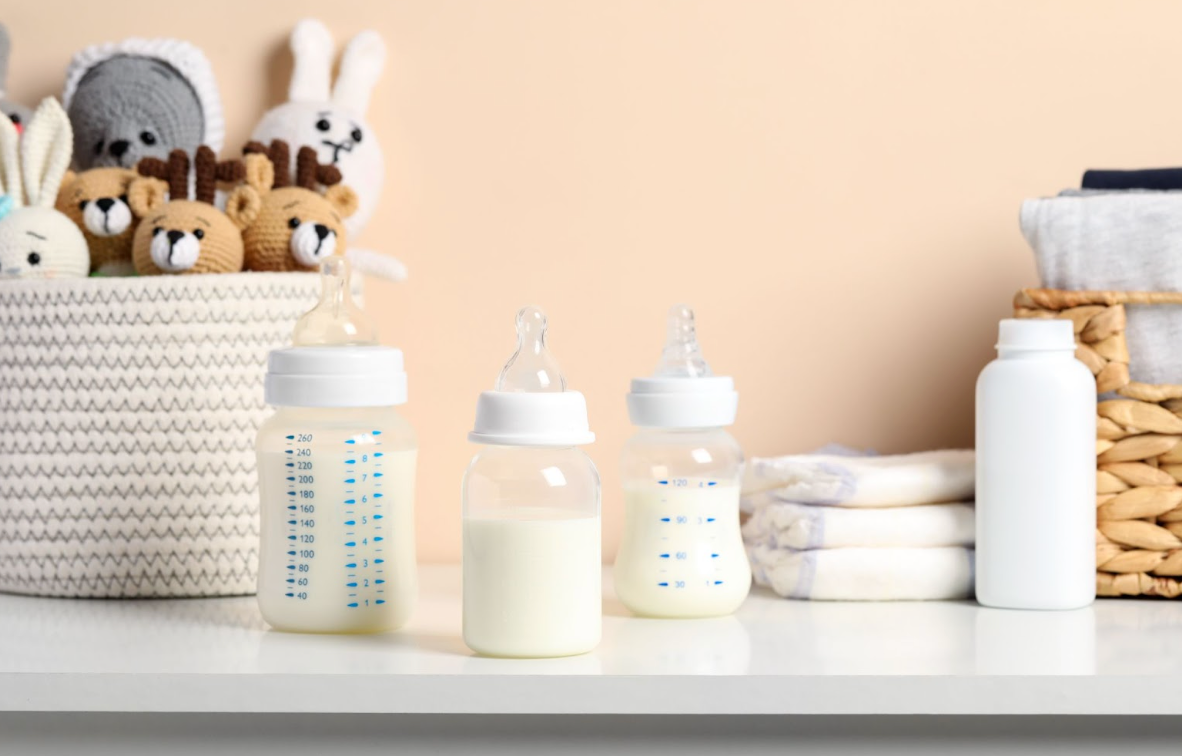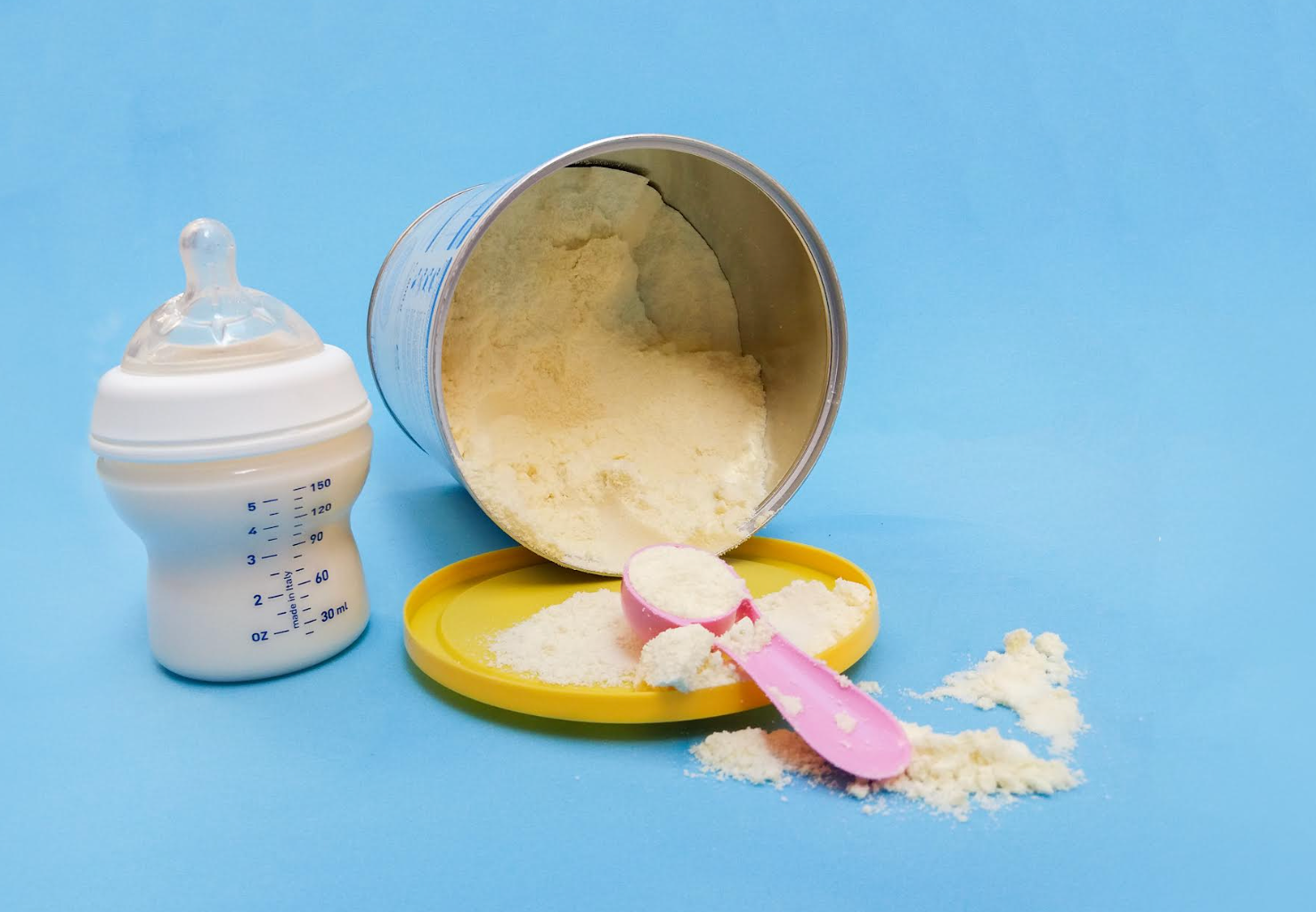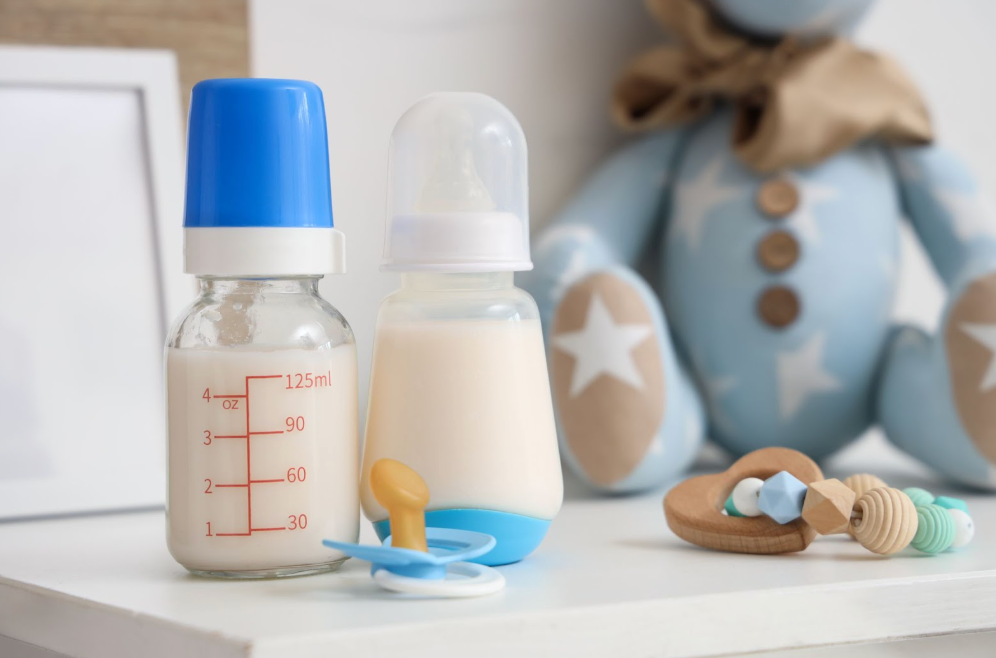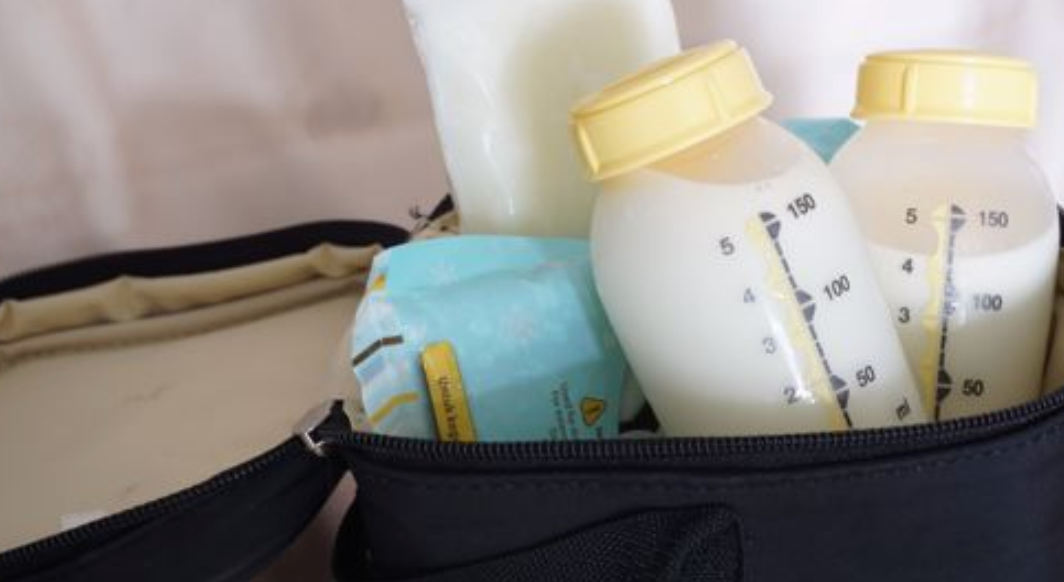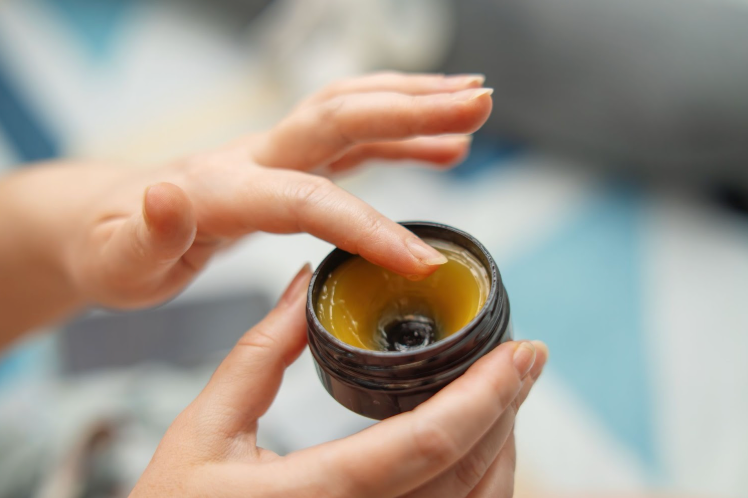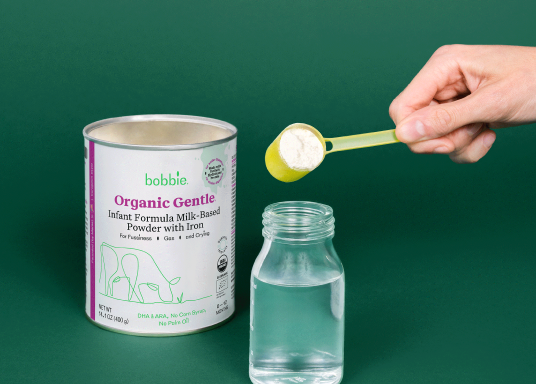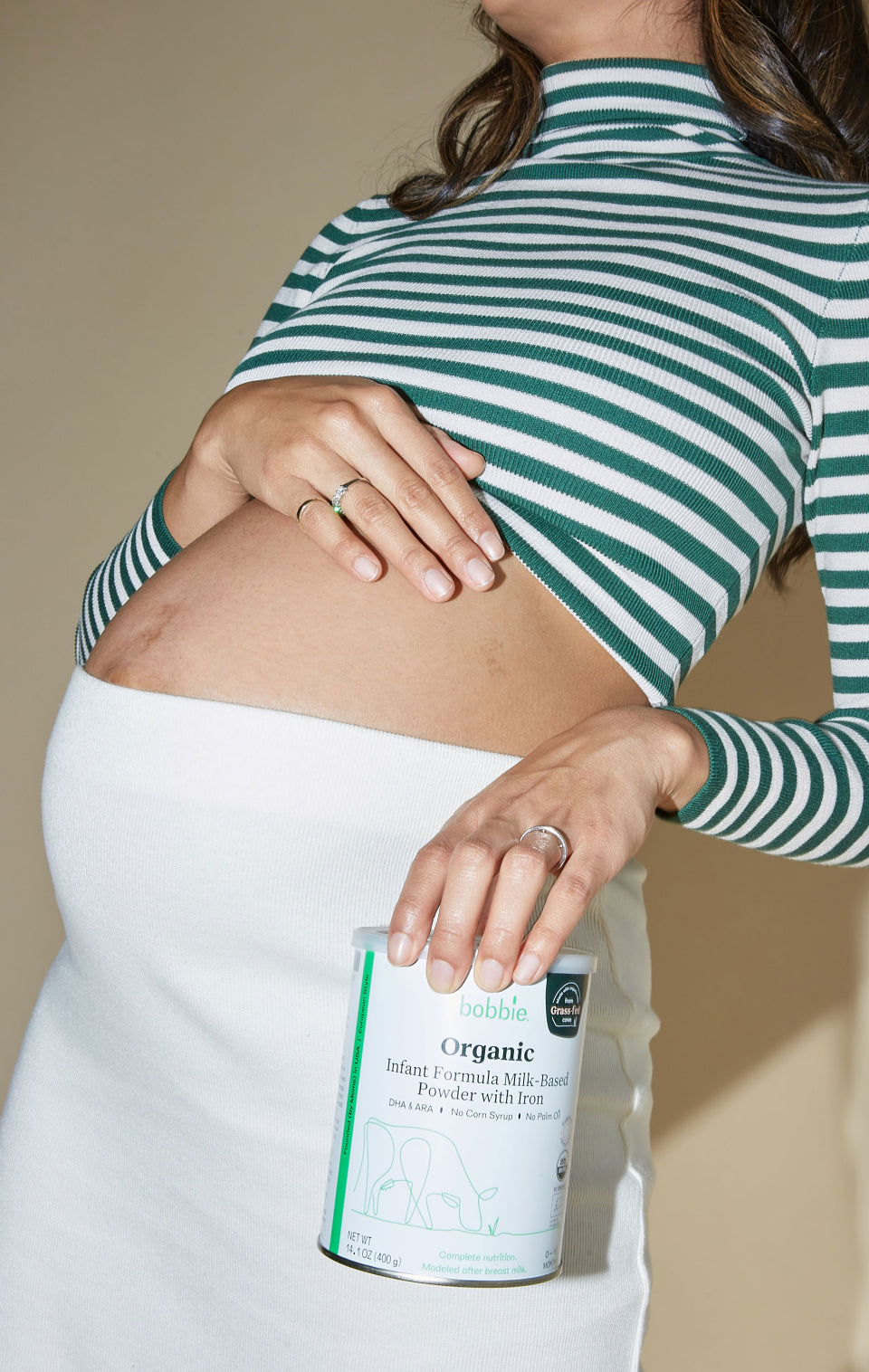Published August 5, 2025

Breastfeeding Pain: What’s Common and What's NOT Normal
By the NAPS experts Emily Silver, NP-C, IBCLC and Jamie O'Day, RN, IBCLC
Let’s talk about the number-one breastfeeding question we get from new moms: “Is it supposed to hurt this much?” And let’s also talk about the bad advice that too often follows, like: “Just push through — your nipples will toughen up.”
Here’s the truth: while breastfeeding pain is common, it’s not something you just have to live with. It’s not a badge of honor or a rite of passage — it’s a red flag that something’s not quite right. The good news? You don’t have to grit your teeth and wait it out. With the right support, feeding your baby can and should feel good.
What’s Actually Normal in the Early Days
In those first few days after birth, your body is doing some serious recalibrating. Your breasts are figuring out how much milk to make, and your nipples are adjusting to their brand-new job. It’s totally normal to feel a strong tug when your baby latches, or a little soreness that fades after the first minute or so of nursing. Around day three or four, when your milk starts to come in, your breasts might feel full, heavy or even a little achy — that’s par for the course.
These sensations are usually mild to moderate, tend to ease up as the feed continues, and often get a whole lot better by the end of the second week.
So, why does early breastfeeding sometimes feel a bit tender? A few common reasons:
-
Your hormones are shifting big time, which can cause breast swelling and sensitive nipples.
-
Colostrum (the early milk) is transitioning into mature milk, which can make your breasts feel suddenly fuller.
-
You and your baby are still learning how to latch, and that newness can sometimes cause a little pinching.
-
Increased blood flow to the breast as your body gears up for milk production.
The key? Discomfort that stays mild and steadily improves is typically part of the adjustment phase. But if pain lingers, gets worse or comes with new symptoms — it's time to dig deeper.
Meet the first and only USDA organic infant formula manufactured in the U.S.! Bobbie Organic Whole Milk Formula offers complete nutrition for baby's first year with our closest to breastmilk recipe.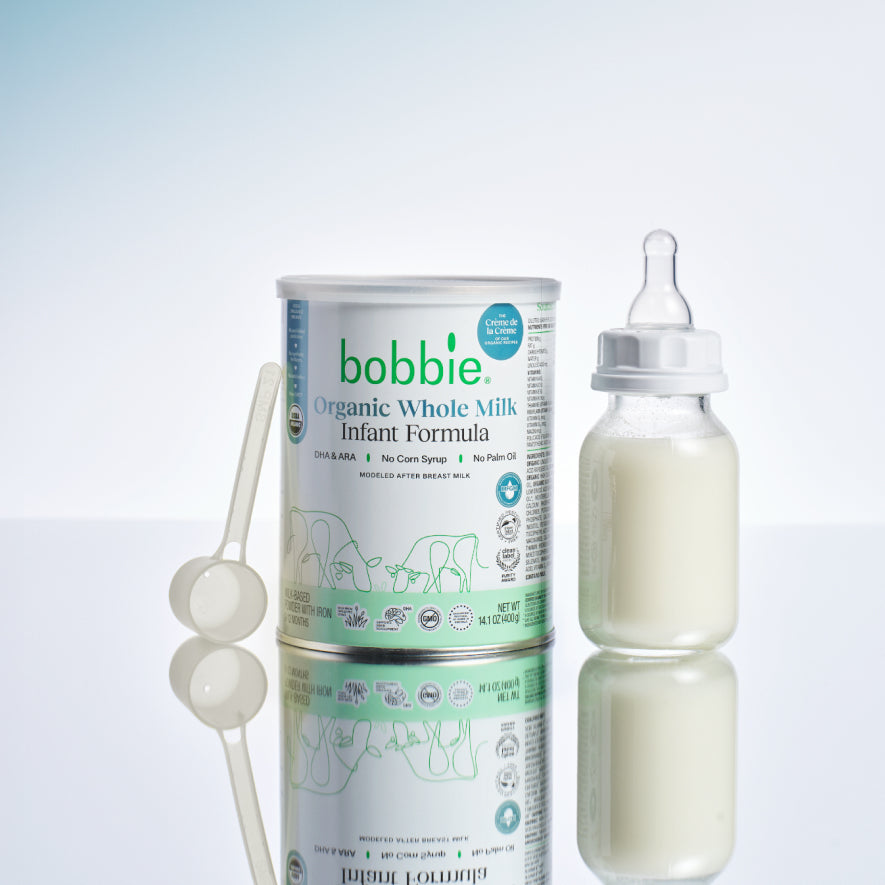
Shop Organic Whole Milk Infant Formula

Why Breastfeeding Pain Happens (And Why It’s Not Normal)
In the early days, it’s natural for breastfeeding to come with a learning curve. Your body is adjusting. Your baby is figuring things out. And yes, your nipples may feel a little sore as they get used to frequent nursing. But ongoing pain — especially sharp, burning, cracked or bleeding nipples — isn’t something you should ignore.
The biggest culprit behind pain? A shallow latch:
-
A shallow latch means your baby is mostly sucking on the nipple instead of taking a good portion of the breast into their mouth. Not only is this less effective for milk transfer (which can leave babies frustrated and hungry), but it’s also painful for you.
-
A deep latch allows your baby to use their tongue and jaw more effectively, helping them get milk efficiently and comfortably for both of you.
What a Deep Latch Looks (and Feels) Like
So how do you know if your baby is latched correctly? Here are some signs of a deep, effective latch:
-
Your baby’s mouth is wide open, angled upward toward your nipple.
-
Their lips are flanged out like a fish (top and bottom).
-
Most of the areola is in the baby’s mouth — not just the nipple.
-
You hear swallowing noises like "kuh" or "kew," rather than clicking or smacking.
-
The baby stays latched through the feed instead of popping on and off.
-
Nursing feels like a gentle tug, not a sharp pinch.
If you’re experiencing pain that lingers past the first few seconds of a latch, or it hurts throughout the feed, something is likely off. Even if things look okay on the outside, subtle issues with positioning, latch depth or the baby’s anatomy can all cause discomfort.
Ways To Treat and Soothe Sore Nipples
If you’re dealing with nipple pain or damage, relief is possible — and you don’t have to tough it out alone. Whether you’re in the early days or working through a rough patch, here are a few simple ways to soothe and support healing:
-
Apply lanolin or nipple ointment: These create a protective barrier, keep skin moisturized and help ease cracks or raw spots. Look for baby-safe formulas you can leave on between feeds.
-
Try warm water therapy: Fill a shallow bowl (yep, a brownie pan works!) with warm water and soak your nipples for a few minutes. It’s surprisingly calming and boosts circulation to promote healing.
-
Use heat or cold compresses: A warm washcloth before feeding can help with letdown, while a cool compress afterward may reduce soreness and inflammation. Go with whatever feels best for your body.
-
Take a warm bath or shower: A few minutes of warmth can relax tight muscles, stimulate milk flow and offer a much-needed moment of calm before nursing.
-
Air things out: Let your nipples dry fully between feeds to prevent irritation. If you can, go braless for short stretches or use breathable nursing pads that won’t stick.
We know this isn’t just a physical experience; it’s emotional, too. When breastfeeding hurts, it can feel discouraging or even isolating. You might start to dread feeds or question your choices. But pain doesn’t mean you’re doing something wrong — it means your body needs care.
Healing is about more than just soothing the skin. It’s about helping you feel more confident, comfortable and connected in your feeding journey. You deserve that.
It Doesn’t Have to Be All or Nothing
Maybe you’ve already tried everything. Maybe you’re considering pumping, combo feeding or supplementing with formula. And maybe part of you wonders if that means you’re giving up. We’re here to say: you’re not.
Making a change doesn't mean you're quitting; you're simply tuning into your needs and your baby’s, and doing what’s best for both of you. Feeding is not a one-size-fits-all journey. What matters most is that you and your baby are both thriving: physically, emotionally and mentally.
In fact, we’ve seen many families find more success (and less stress) by incorporating alternatives like:
-
Pumping to give sore nipples a break while still offering breastmilk
-
Combo feeding (nursing + bottle-feeding) to build in flexibility for you and your baby
-
Supplementing with formula when needed to support the baby’s growth, especially during challenging stretches
These tools aren’t signs of failure — they’re signs of flexibility and strength. And they don’t have to end your breastfeeding journey. They can actually help extend it by reducing pressure, making feeding more comfortable and giving you space to heal and reset.
When you give yourself permission to pivot, you open the door to a feeding experience that feels doable, sustainable and, most importantly, yours.
Common Breastfeeding Pain Myths — Debunked
Let’s bust a few of the most common myths that keep parents stuck in painful patterns:
"Your nipples will toughen up."
Truth: Nipples aren’t supposed to “toughen up” — they’re meant to stay soft and intact. Pain usually points to an issue with latch, positioning or suction. A good latch protects your nipple, not damages it. If it hurts, something can likely be improved.
"Pain is just part of the process."
Truth: Some tenderness at the start can be normal, but ongoing or sharp pain is your body’s way of waving a red flag. It’s not something to push through — it’s something to get help for, because feeding your baby shouldn’t feel like a struggle.
"If it hurts, you're doing it wrong."
Truth: Not necessarily. Even with perfect technique, other factors like tongue ties, flat nipples or engorgement can lead to pain. This isn’t about blame — it’s about getting the right support to understand what’s really going on.
"Stick it out for six weeks — it gets better."
Truth: Sure, things can improve over time, but they don’t always, especially without support. You don’t have to suffer through weeks of discomfort. There are tools, tips and experts who can help you feel better much sooner.
What Support Really Looks Like
Support isn’t just someone handing you a nipple shield and wishing you luck. It’s having someone who listens, validates and offers real guidance that fits your lifestyle and goals.
At NAPS, our team of RNs, NPs and IBCLCs works with families at all stages of feeding. Whether you’re exclusively breastfeeding, bottle-feeding or somewhere in between, we’re here to help you:
-
Troubleshoot latch or positioning issues
-
Identify causes of persistent pain
-
Explore flexible feeding options
-
Create a plan that reduces stress and increases joy
Our goal is not to make you breastfeed longer or harder; it’s to help you feed your baby in the way that works best for you — pain-free and with confidence.


Your go-to resource for all things new baby.
Sign up to get the scoop on feeding, sleep, poop, and so much more.
By singing up for email, you are to receive marketing emails from Bobbie and can manage your email preferences or unsubscribe at anytime
Breastfeeding Pain FAQs
Here are some of the most common questions we hear from parents — plus expert answers to help you feel more informed, empowered and supported.
Can breastfeeding still hurt even if the latch looks okay?
Yes. Even if everything looks good on the outside, there could be subtle issues with positioning, latch depth or your baby’s oral anatomy. A lactation consultant can help identify what’s going on and make small tweaks that bring big relief.
Is it normal to have one side that hurts more than the other?
Totally normal! Many parents find that one breast is more sensitive or tricky for the baby to latch to. Try starting feeds on the more comfortable side and experimenting with different positions on the other. And if one side continues to hurt, have a professional take a look.
What are the signs that my baby isn’t getting enough milk?
Look out for signs like poor weight gain, fewer than six wet diapers a day after the first week, or a baby who seems fussy and unsatisfied after most feeds. Pain during nursing can sometimes interfere with milk transfer, so it’s worth getting support early.
Can pumping help with nipple pain?
Yes, pumping can be a great way to give sore nipples a break while still providing breastmilk. Make sure your flange fits properly, and adjust the suction so it feels gentle — not painful. Alternating between nursing and pumping can support healing and flexibility.
Do nipple shields help or make things worse?
Nipple shields can be a helpful temporary tool, especially for damaged nipples or latch challenges — but they’re not a long-term solution for pain. Always check in with a lactation consultant to make sure they’re being used correctly and not interfering with milk transfer.
What’s the best breastfeeding position to reduce pain?
There’s no one-size-fits-all, but positions that allow you to bring the baby to your breast (rather than leaning toward the baby) can help with alignment. Laid-back, side-lying and football hold are great for trying different angles that may feel more comfortable for both of you.
When to Reach Out
Still wondering whether you need help? If you answer "yes" to any of the following, it’s time to talk to a lactation consultant:
-
Your nipples are cracked, bleeding or blistered
-
You dread feeding sessions
-
Your baby is fussy at the breast or is not gaining weight well
-
You feel overwhelmed, discouraged or unsure of what to try next
-
You’re considering switching feeding methods but want guidance
You don’t need to wait until breastfeeding issues feel urgent. The earlier you seek support, the easier it is to prevent long-term issues and establish a feeding routine that works.
You Deserve Relief (and Reassurance)
We want you to know: it’s not your fault. Pain doesn’t mean you’re failing. It means your body is sending a message — and you deserve to listen. Whether you’re in the thick of it now or just want to prepare, support is available. Our team at NAPS is here to make sure you never feel like you have to figure this out alone.
If you’re struggling with pain, discomfort or simply want guidance to make breastfeeding easier, book a 1:1 consultation with a NAPS RN/NP and IBCLC. Schedule a virtual appointment that fits your schedule and needs.
You may be in-network with your insurance plan. Not sure? Use code BOBBIE20 to save 20% on your visit. You don’t have to tough it out or do this alone — we’ve got your back (and your boobs)!
The content on this site is for informational purposes only and not intended to be a substitute for professional medical advice, diagnosis or treatment. Discuss any health or feeding concerns with your infant’s pediatrician. Never disregard professional medical advice or delay it based on the content on this page.








